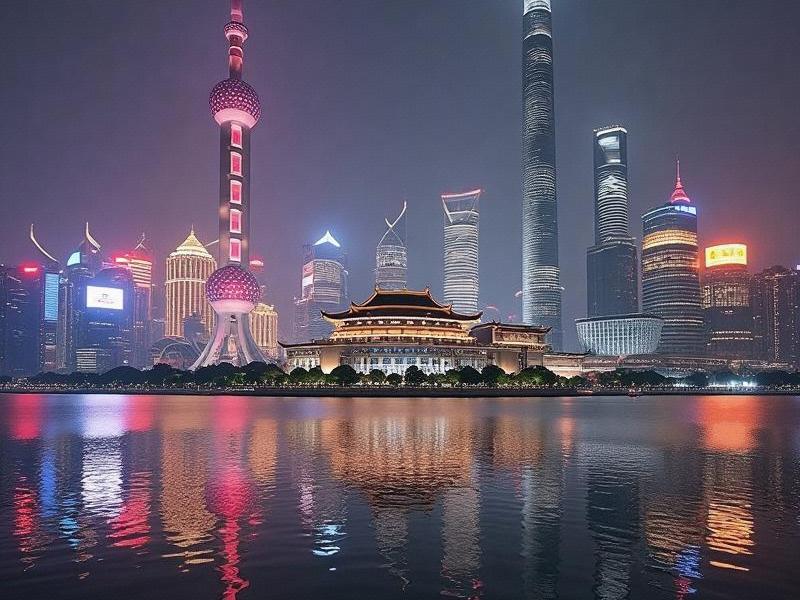Shanghai: The Nexus of Tradition and Innovation
⏱ 2025-05-05 20:53 🔖 上海龙凤419
📢0℃

Article Content
The Dual Identity
Shanghai's identity is defined by paradoxes. The Bund's Art Deco facades stand as monuments to colonial history, yet their LED-lit facades now display real-time blockchain transaction data. The city's GDP grew 6.9% in Q2 2024, driven by 47% year-on-year increases in fintech startups, while traditional craft villages like Zhujiajiao maintain centuries-old silk-weaving techniques using AI-powered looms.
Architectural hybridity defines the urban fabric. The Shanghai Tower's helical design symbolizes the city's upward trajectory, but its basement houses the Yangtze River Delta Cultural Archive—a digital repository of 2.3 million artifacts from regional folk arts. "Modernity doesn't erase tradition," asserts urban planner Ma Jun. "It recontextualizes it."
Tech-Driven Heritage
爱上海论坛 The city's cultural institutions are embracing disruptive tech. The Shanghai Museum's "Digital Silk Road" project uses generative AI to reconstruct lost Tang Dynasty murals, while the Yu Garden complex employs AR navigation to overlay historical battle scenes onto its Ming Dynasty pavilions.
In Jing'an Temple's underground "Smart Canal," drones monitor water quality while projecting holographic poetry onto ancient stone bridges. "We're creating living history," explains cultural anthropologist Chen Xi. "Every interaction generates data that preserves intangible heritage."
Green Metamorphosis
Sustainability drives urban innovation. The Sifang Art Museum's rooftop farm supplies ingredients for Michelin-starred restaurants, while Jiaxing's "Zero-Waste Industrial Park" recycles 98% of manufacturing byproducts into biodegradable glitter.
上海龙凤419油压论坛 The Huangpu River's smart embankments use AI to balance ecological preservation with commercial needs—kinetic dance floors generate electricity from foot traffic, and noise-canceling soundscapes protect migratory bird habitats. "Environmental stewardship is now a competitive advantage," states Li Na, CEO of Envirotech Solutions.
Social Fabric Evolution
Urbanization fosters cultural hybridity. In Putuo District's "Night Owl Hub," retirees teach laser-engraved paper-cutting while young professionals trade cryptocurrency strategies. Community centers blend tai chi sessions with VR calligraphy classes, creating intergenerational dialogue that 78% of participants credit for improved mental health.
The city's LGBTQ+ scene thrives in Yuyuan Garden's "Rainbow Courtyard," hosting blockchain-secured "Digital Coming-Out Balls" that protect privacy through VR avatars. "This isn't just nightlife," says activist Li Xin. "It's urban therapy reimagined."
爱上海 Future Visions
Shanghai's 2035 masterplan envisions 6G-powered "smart neighborhoods" where autonomous vehicles share data with traditional rickshaw routes. Pilot projects include:
- Floating quantum communication hubs on the Huangpu River
- Underground "Neon Rainforests" using bioluminescent algae for ambient lighting
- AI matchmakers pairing diners via facial symmetry algorithms
As dusk falls, the Oriental Pearl Tower's LED sphere synchronizes Peking opera broadcasts with real-time stock market data. Here, in this city where East meets algorithm, the future isn't built—it's continuously recalibrated.
In Shanghai's urban narrative, every blockchain transaction complements ancestral craftsmanship, every holographic performance redefines cultural memory. This metropolis exemplifies humanity's grandest experiment: harmonizing progress with tradition in real time. As dawn breaks over the Yangtze Delta, Shanghai stands as proof that modernity need not erase the past—it can reinterpret it.
【潮涌长三角:上海的半径与圆周】从外滩灯光到江南水乡的共生密码Shanghai's Vibrant Cultural Scene: A Blend of Tradition and Modernity【霓虹与素笺】上海女性的百年气质图谱Shanghai 5250: Quantum Leisure Singularity and the Galactic Nightlife Matrix【城市观察】文化魔方的三原色:上海剧场、书店与美术馆的共生实验Shanghai's Nightlife Renaissance: Where Imperial Heritage Meets Quantum Innovation【霓虹密码】上海娱乐会所的时空折叠术Shanghai's Smart Nightlife Ecosystems: Blending Imperial Heritage with AI-Driven Innovation【量子上海】在11个维度中同时绽放的魔都镜像(1850-2025)Shanghai's Finest Women: A Story of Resilience and Excellence

